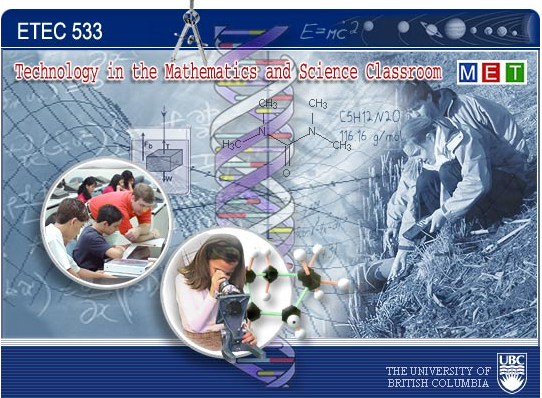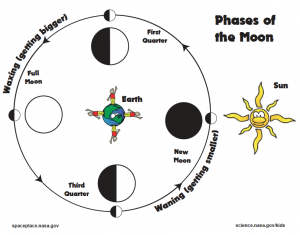Imagine how LfU principles might be applied to a topic you teach. Now switch out the digital technology. What other domain specific (and non-domain specific) software might help you achieve these principles while teaching this topic? By domain-specific, we mean software designed for STEM education, and by non-domain specific, we mean software or other forms of technology that could be used generally in multiple domains (eg. Wikis). Other GIS software can be selected for the switch.
The four principles are (Edelson, 2002):
- Learning takes place through the construction and modification of knowledge structures.
- Knowledge construction is a goal-directed process that is guided by a combination of conscious and unconscious understanding goals.
- The circumstances in which knowledge is constructed and subsequently used determine its accessibility for future use.
- Knowledge must be constructed in a form that supports use before it can be applied.
One topic I do teach is the phases of the moon. How it affects the Earth ? How does it work ? What does it change for us in our everyday life ? I always ask my students how do they think the moon affects our lives. Some misconceptions that I observe are that the moon produces light ; light is reflected from the earth to the moon ; phases of the Moon are caused by a shadow from the Earth or clouds; different countries see different phases of the Moon on the same day; the Moon goes around the Earth in a single day; the Moon does not rotate. To correct these misconceptions and have the students understand what is going on with the Moon, we have some websites, videos, animations and some experimentations. Here are some examples : Wonderville or website like this, or another one from NASA, finally BrainPop. These kind of websites do create some interests and stimulate questions. If I wanted to apply the LfU principles to this project, I would certainly try to create motivation towards this project by having a group discussion about the Moon and find out what they know about it. The idea being to plant some seeds and generate interests. Edelson (2002) stated that the first step in learning for use is recognizing the need for new knowledge. By introducing the subject, I suspect some interest will grow. A short activity on planets and their satellites would take place and make the students want to know more. Knowledge construction is the next step, as cited by Edelson (2002). The learner needs to create new connections to build knowledge. Videos and/or animations would support the learner in it’s quest to new knowledge. Discussion with peers would follow this activity to support the process and exchange of ideas reinforce these new understandings. From this knowledge refinement, which responds to the need for accessibility and applicability of knowledge (Edelson, 2002), is taking place. Learners learn to make connections between knowledge that they acquired. They access and apply the notions learned, when they understood them. They can apply them in real life situation.
Domain specific application I would use on top of websites could be QuickPhase or Astronomical Applications.
For non domain specific, I would use Wikis, Prezi, Voki, Moodle and KidBlog to pursue activity specific discussions or reflections. As these applications multiple interactions from peers to combine ideas, reflect on ideas or build ideas from scratch.
Reference :
Edelson, D. C., Salierno, C., Matese, G., Pitts, V., & Sherin, B. (2002, April). Learning-for-Use in Earth science: Kids
as climate modelers. Paper presented at the Annual Meeting of the National Association for Research in Science Teaching, New Orleans, LA. Download this paper as a Word document from Northwestern University’s site:http://www.worldwatcher.northwestern.edu/userdownloads/pdf/LFU_PF_NARST02.v3.doc

